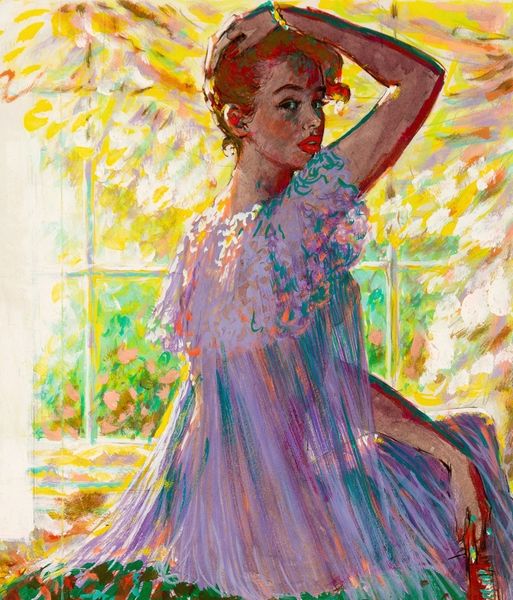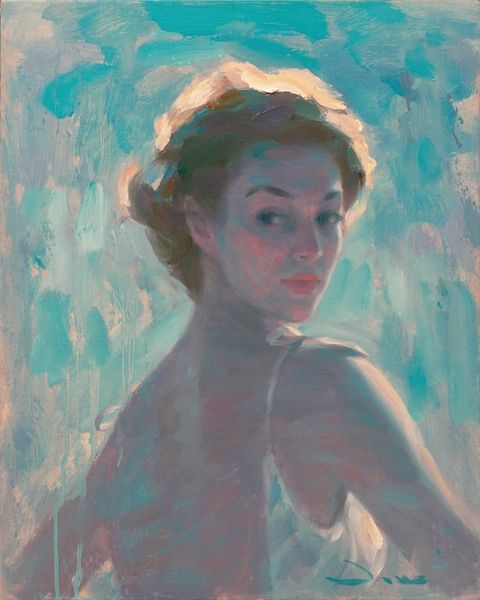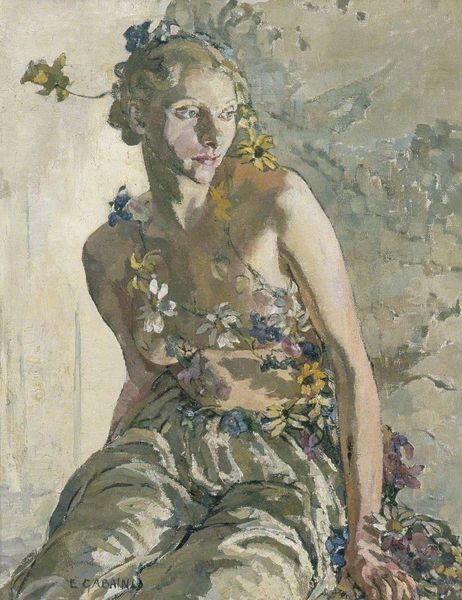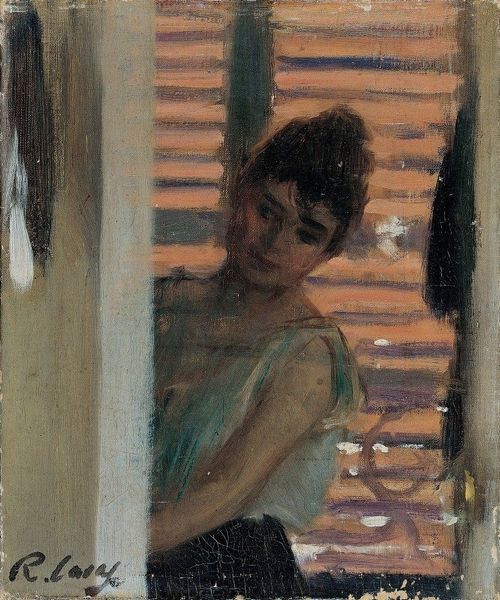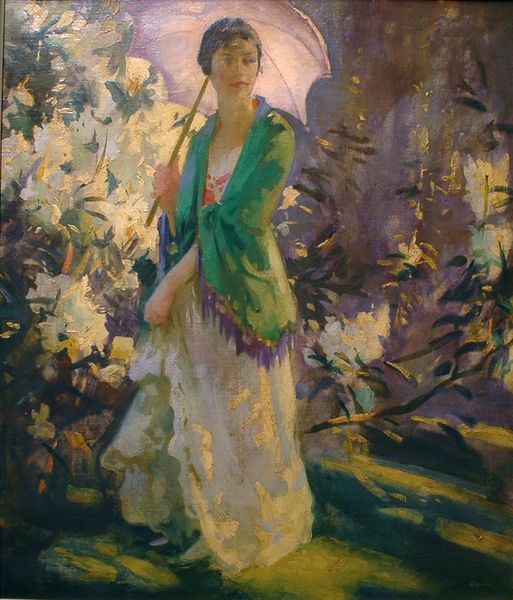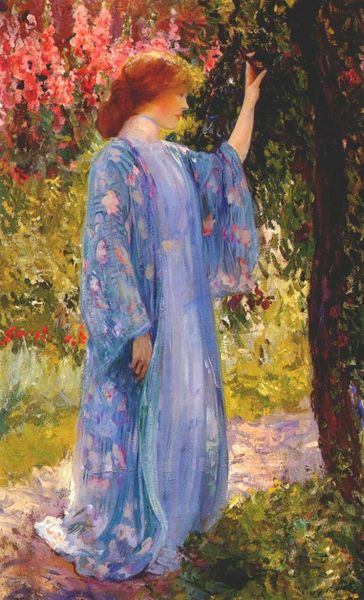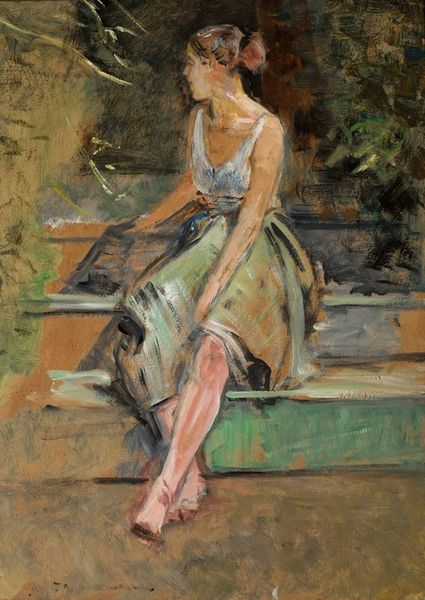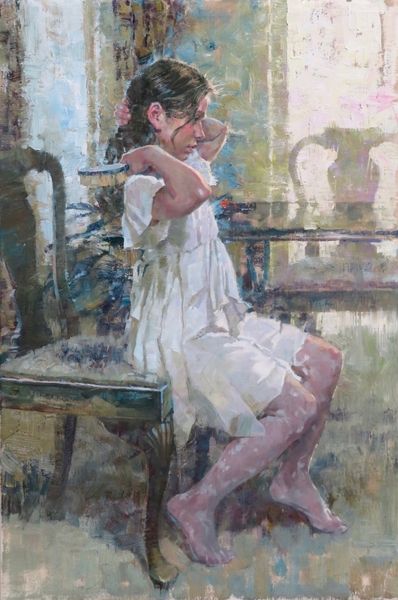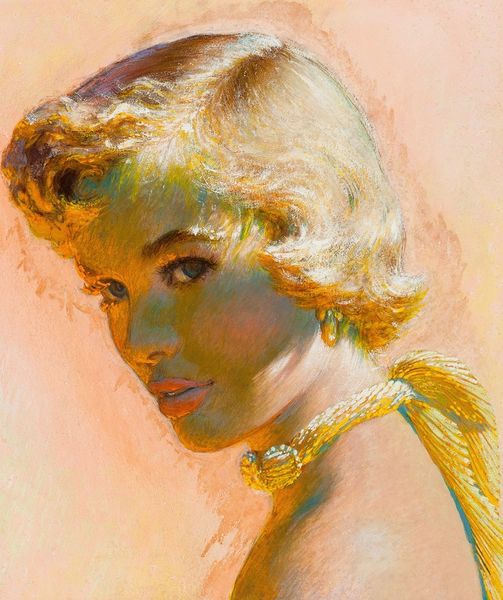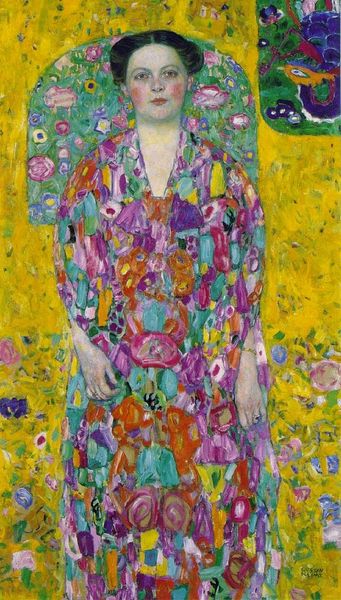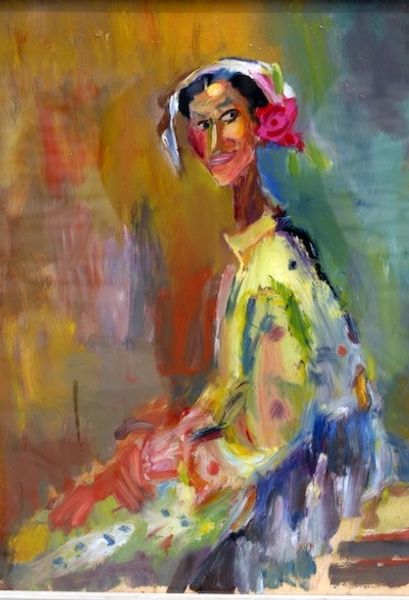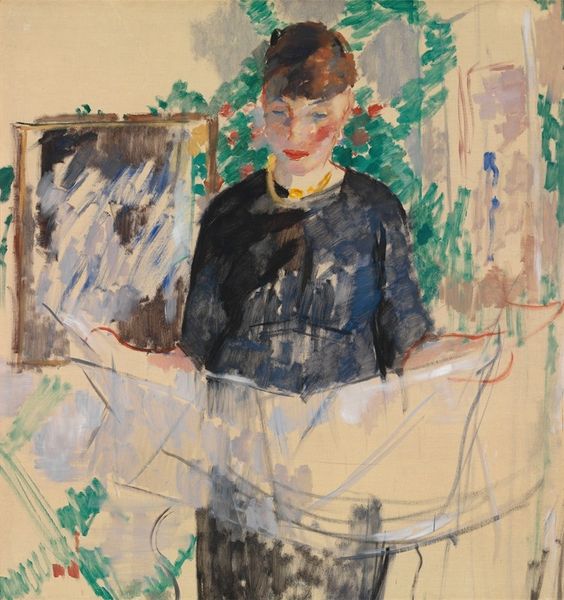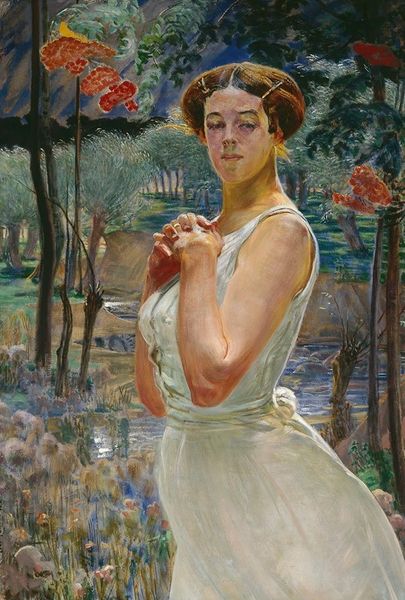
‘I’d Rather You Didn’t Come Back Again’, The Saturday Evening Post preliminary story illustration
0:00
0:00
painting, oil-paint
#
portrait
#
painting
#
oil-paint
#
figuration
#
oil painting
#
genre-painting
Copyright: Modern Artists: Artvee
Curator: Let’s turn our attention to Edwin Georgi’s preliminary illustration for The Saturday Evening Post, titled ‘I’d Rather You Didn’t Come Back Again.’ Editor: What strikes me immediately is the expressive application of oil paint; the impasto and loose brushwork convey a certain raw vulnerability. There's something quite unsettled about it. Curator: Indeed. Note the composition: a woman stands framed by a window, gazing off to the side with a distinct emotional charge. Consider how the artist utilizes color and light. Editor: It’s the tension between the floral blouse and the anxious facial expression that catches my eye. Georgi seems to be playing with the textures of domesticity against this implied narrative, maybe one of constraint? We’ve got brushstrokes building up these surfaces almost sculpturally. How do the materials intersect with that mid-century depiction of gender, of labor, of consumerism? Curator: That friction is absolutely essential. The semiotics here are quite pronounced. We have a study in contrasts: soft versus sharp lines, the interior space against the indeterminate exterior implied through the window. Editor: Right. The visible, gestural marks of paint acknowledge the manual labor involved in image-making, something frequently glossed over in magazine illustrations from this period. And how those loose dabs, applied to build up color, disrupt clean lines, suggesting a dissonance within the scene, perhaps mirrored the experience for the image’s viewers in real time. It makes one question, how many workers, illustrators like Georgi, and editors were involved in translating societal realities onto paper? Curator: Exactly. In structuralist terms, it creates a system of binary oppositions that destabilizes a clear reading. It is no simple happy picture! The viewer is invited to project, to fill in the narrative gaps. Editor: Agreed. Georgi's art acknowledges that pictures do work and it isn't invisible. These loose and visible paint applications seem very purposeful. I walked in expecting to observe how art of that moment tried to erase process but Georgi instead foregrounds it. Curator: Precisely. Thinking through both the artwork's internal relations and sociohistorical aspects, it makes us really understand this isn't as straightforward as one initially believes it might be.
Comments
No comments
Be the first to comment and join the conversation on the ultimate creative platform.
